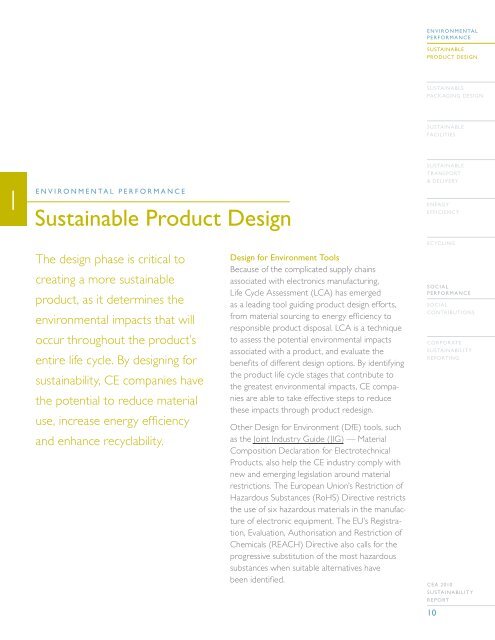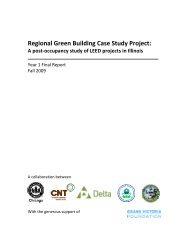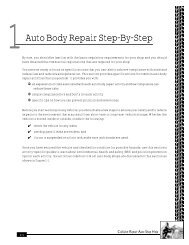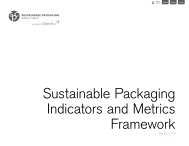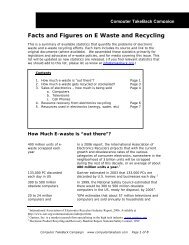CEA 2010 Sustainability Report - Consumer Electronics Association
CEA 2010 Sustainability Report - Consumer Electronics Association
CEA 2010 Sustainability Report - Consumer Electronics Association
Create successful ePaper yourself
Turn your PDF publications into a flip-book with our unique Google optimized e-Paper software.
E N V I RO N M E NTA L<br />
PERFORMANCE<br />
SUSTAINABLE<br />
PRODUCT DESIGN<br />
SUSTAINABLE<br />
PACKAGING DESIGN<br />
SUSTAINABLE<br />
FACILITIES<br />
1<br />
E N V I R O N M E N T A L P E R F O R M A N C E<br />
Sustainable Product Design<br />
SUSTAINABLE<br />
TRANSPORT<br />
& DELIVERY<br />
ENERGY<br />
EFFICIENCY<br />
The design phase is critical to<br />
creating a more sustainable<br />
product, as it determines the<br />
environmental impacts that will<br />
occur throughout the product’s<br />
entire life cycle. By designing for<br />
sustainability, CE companies have<br />
the potential to reduce material<br />
use, increase energy efficiency<br />
and enhance recyclability.<br />
Design for Environment Tools<br />
Because of the complicated supply chains<br />
associated with electronics manufacturing,<br />
Life Cycle Assessment (LCA) has emerged<br />
as a leading tool guiding product design efforts,<br />
from material sourcing to energy efficiency to<br />
responsible product disposal. LCA is a technique<br />
to assess the potential environmental impacts<br />
associated with a product, and evaluate the<br />
benefits of different design options. By identifying<br />
the product life cycle stages that contribute to<br />
the greatest environmental impacts, CE companies<br />
are able to take effective steps to reduce<br />
these impacts through product redesign.<br />
Other Design for Environment (DfE) tools, such<br />
as the Joint Industry Guide (JIG) — Material<br />
Composition Declaration for Electrotechnical<br />
Products, also help the CE industry comply with<br />
new and emerging legislation around material<br />
restrictions. The European Union’s Restriction of<br />
Hazardous Substances (RoHS) Directive restricts<br />
the use of six hazardous materials in the manufacture<br />
of electronic equipment. The EU’s Registration,<br />
Evaluation, Authorisation and Restriction of<br />
Chemicals (REACH) Directive also calls for the<br />
progressive substitution of the most hazardous<br />
substances when suitable alternatives have<br />
been identified.<br />
ECYCLING<br />
SOCIAL<br />
PERFORMANCE<br />
SOCIAL<br />
CONTRIBUTIONS<br />
CORPORATE<br />
SUSTAINABILITY<br />
REPORTING<br />
CE A <strong>2010</strong><br />
SUSTAINABILIT Y<br />
REPORT<br />
10


